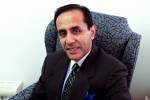Working with a personal trainer
When Kim Christiansen decided to lose weight 2½ years ago, the task was daunting. At close to 300 pounds with four children and a full-time job, finding the dedication and focus to make the serious lifestyle changes she needed to be healthy was more than she thought she could successfully take on alone.
Even so, for the first few weeks she did try to lose weight on her own. She joined the gym and went daily but her insecurities about not knowing how to properly train and use equipment made her feel that all eyes were on her. She also was not seeing the results she wanted. After several weeks she only lost 12 pounds and her frustration combined with her uncertainty to cause her to take a serious step — and get a personal trainer.
“I just needed to take it to the next level and I wanted real results,” said Christiansen.
Her search for a trainer was not very successful at first. Attempts to hire six different trainers failed (a couple of them told her they couldn’t train her and the others just didn’t call back) and caused her to get discouraged.
“As it is it was very intimidating looking, especially when I was getting rejected, but I finally found someone,” she said.
That trainer was Angela Farrar of Sexy Fit Body Fitness. For Christiansen she was the perfect fit, but what may work for one person may not work for another. Christiansen recommends searching until you find someone who fits your style.
“I was looking for someone that was patient and friendly; maybe other people like aggressive trainers,” Christiansen said.
Christiansen stuck with Farrar. She learned to keep a food journal and made exercise a key part of her life. She applied her new health regimen with her family and today is almost 100 pounds lighter, weighing in at a comfortable 195 pounds.
Not all stories are as successful as hers, which is why Farrar recommends choosing wisely when looking for a personal trainer.
“It’s important that you ask trainers what kind of experience they have and ask them about their success stories with their clients and who can maybe provide photos,” Farrar said.
Another important thing to look for is if a trainer is certified nationally. The certifications should come from reliable organizations such as the National Academy of Sports Medicine, Aerobics and Fitness Association of America, American Fitness Professional and Associates, International Sports Sciences Association and other organizations that certify personal trainers. You may want to ask to see their certification because some certifications, such as those from the Aerobics and Fitness Association of America, which is what Farrar has, expire every two years.
Personaltrainer.com also recommends making sure that your personal trainer is certified in CPR should the need ever arise.
Farrar also recommends watching a personal trainer around the gym and seeing how she or he trains the client.
“If you see them talking on the phone or texting, that is a huge red flag because that is your time,” Farrar said.
Other things you can see when watching a personal trainer is his or her style of coaching. Different people respond to different styles. It is essential to find someone who will give you the type of motivation you desire, in the way that is most likely to help you succeed.
Once you start with a trainer you have to feel that you are given the attention you need.
“You need to have a genuine feeling that this person is listening to you and cares; you also need to know that they are reliable. If your trainer says they are going to do things for you and follow-up like sending you recipes, nutrition tips and they don’t follow through, that is another red flag,” Farrar said.
Farrar says you also can get a good idea of what kind of personal trainer suits you just by looking at his or her Web site and pictures.
“If you look at their pictures in an ad or Web site and they are ripped and they are showing off their six pack, that is intimidating. They maybe will get the five or six people who want to look like that, but most people just want to shed pounds and want someone they can feel comfortable (with) weighing them,” Farrar said.
Farrar says a personal trainer should be able to fit your emotional needs as much as your physical needs.
“When you interview your trainer they should have a chameleon personality where he or she can adapt to all types of people. If you are not getting along with your trainer from the moment you meet them, that might be an ego thing. The trainer should accommodate to you and knowing that comes from experience,” Farrar said.
When you meet with your personal trainer, Farrar says the client and the trainer should discuss the goals of the client, the weaknesses, strengths and health issues, if there are any.
The trainer also should weigh his or her client and take measurements to keep records of change.
Along with discussing the personal needs, the trainer will probably have to have the client sign a medical release form.
“If they sign it, then I am taking their word that they have had their release from their doctor; but in the event that they have had a pacemaker or a heart attack in their past then I absolutely request a doctor’s note,” Farrar said.
Dr. Laura Addis of Jacobs and Modaber Ltd., who is board certified in internal medicine, says everyone should have seen a doctor before starting out an exercise regimen, but that is because everyone should see their physician at least once a year.
Even so, Addis said, some people need to discuss exercise routines with their doctors — such as patients with high blood pressure, high cholesterol, diabetes, emphysema or who are obese.
“You should be able to talk to your doctor beforehand and ask them to make recommendations. There are certain patients who have medications that restrict your heart rate and that is something that needs to be taken into consideration before starting to work out,” Addis said.
Some trainers can overexert their clients and that is something that can cause serious injuries — which is why Addis says it is important to pay attention to your body.
“There is good pain and bad pain. If you are having pain when you are exercising, that is something that needs to be looked at. Some athletes say they get a burn after a set of exercises and that is different pain than if you are doing an exercise and you feel physical pain and discomfort. At that point you should reassess your workout,” said Addis.
Farrar said she does not push a client to the limit of confusing pain.
“As a new client you are not supposed to feel like you can’t walk the next day because then you are scared to death of your trainer. Your trainer should baby step you to the point where they learn what levels they can push you to,” Farrar said.
Another important thing to keep in mind is heart rate; Addis recommends that a patient check his or her pulse often to make sure he or she is not overdoing it.
“I usually tell people at the beginning to keep their heart rate at just over 40 percent and gradually work your way up and if you can afford it, get a heart monitor. If not, you can use your fingers and put them along side your neck and count your pulse,” Addis said.
Another thing that Addis said to take into consideration is the workout gear, because an old pair of shoes or shoes that aren’t specific to the type of workout can cause problems such as shin splints.
However, Addis also said that she didn’t want not having a good pair of shoes to discourage someone from working out because not getting exercise could cause an even bigger problem.
To avoid other serious injuries caused by workouts, such as knee problems, which Addis said is one of the most common, it is important to stretch.
“Some of the biggest problems people have are not warming up before an exercise or not stretching or drinking enough water during exercise can be serious problems,” said Addis.
The most important thing, Farrar said, is to be patient; results will not be immediate and she recommends waiting four weeks to see results on average and recommends weighing and measuring only once a week.
A personal trainer is not cheap, which is why you want to make sure you find the right one and that you listen to everything he or she asks you to do during the days you are not working out together.
Farrar said a trainer can cost anywhere from $50 to $75 an hour and usually requires clients to sign up for at least three sessions a week.
“The average person that is educated about personal trainers does not expect to spend less than $400 a month,” Farrar said.
However, someone can get much more from a personal trainer for his or her money. A lot of trainers also can provide a nutrition plan.
“Ask for a nutrition plan. Half offer it for free and some charge extra for it. That part is important because nutrition is important. It is a minimum of 80 percent of how you look. Some people say that they can work out and eat anything but they need to meet me in the middle and make changes,” Farrar said.
Farrar also has her clients keep a food journal, something Christensen said is very effective
For those who cannot afford a personal trainer, Farrar said there are other options. Like some other trainers, she offers group sessions. The sessions include three or four people but are still intimate enough for the trainer to give individual attention to each client. Other trainers may also offer some sort of flexibility if a client asks for it. The group sessions are typically a lot more affordable than training one-on-one and can also be a lot more fun. Farrar says her clients in the group sessions develop camaraderie.
Farrar said she recommends that clients train with a personal trainer for at least three months to get to a level where they are comfortable and understand what they are doing.
“You take everything you learn and you apply it for the rest of your life and you are basically paying for knowledge,” Farrar said.
If personal or group training is still not in someone’s budget, both Addis and Farrar recommend that people get exercise in anyway.
“Exercise is the single most important thing Americans are lacking. That’s why we have an obesity problem and as many medical and health problems that we have,” Addis said.
Christensen says her decision to work with a personal trainer was well worth it. Her weight loss has allowed her to do some exciting things.
“Well … it’s awesome; I finally got up on water skis. I couldn’t stay up, but I got up. My next step is to also get certified as a personal trainer and learn how to snow board. That is my newest thing,” Christiansen said.























